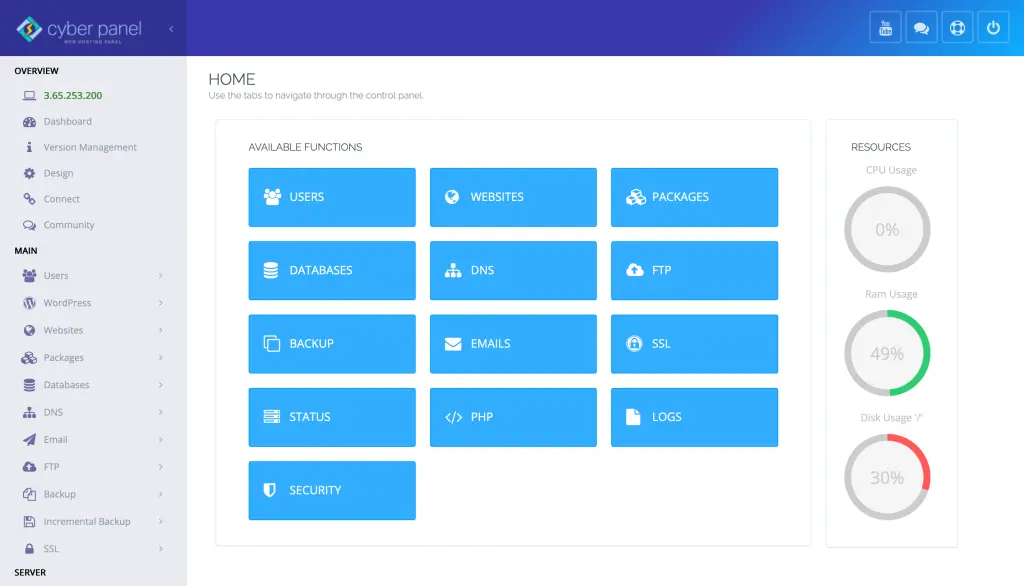One of the most common things one might need to know is how to copy a file in Linux. Copying a file in Linux is an important skill whether you are managing files on a server, organizing your data, or backing up important documents. Linux has several ways of copying files and learning these commands will save you time as you will have multiple solutions depending on your goals. In this tutorial, you will learn the most popular approaches to copying a file in Linux, how to copy all files in a directory in Linux, and how to copy a file to another directory in Linux. Want to take your Linux skills to the next level? Let’s get started!
The Basics of How to Copy a File in Linux
If you’re on Linux, you’ll use the cp (copy) command to copy files and directories. This is an easy but very efficient command for file copying from one directory to another or remote servers to a directory.
Syntax of the cp Command
If you want to find out the basic syntax for the cp command, you can use the following command:
cp [options] source destinationsource: Path of the file or directory to copy
destination: Where you want to copy the file or directory.
If you simply want to copy a file in Linux, you can pass the source and the destination as follows:
Get exclusive access to all things tech-savvy, and be the first to receive
the latest updates directly in your inbox.
cp myfile.txt /home/user/Documents/This will copy myfile. txt from the current directory to /home/user/Documents/.
How to Copy a File to Another Directory in Linux
For example, to copy a file to another directory in Linux, use the path to the destination directory. Here’s an example:
cp /home/user/myfile. txt /home/user/Backup/This command copies myfile.txt to /home/user/Backup/ folder.
Copy All Files in a Directory Linux
Use * (All Files in Current Directory). The * will select all files in the current Linux directory. Here’s an example:
cp * /home/user/Documents/This copies all files from your current directory into /home/user/Documents/, excluding subfolders. To include any subdirectories and their contents, just add the -r (recursive) flag:
cp -r * /home/user/Documents/This command not only copies all files but also directories c to the given destination.
Linux Copy All Files in a Directory
To copy all files in a directory to another directory in Linux, you simply need to provide the path of the source directory and the target directory. Use the following command:
cp /home/user/Downloads/* /home/user/Documents/This will copy all the files from the /home/user/Downloads/ directory to /home/user/Documents/. Again, to copy subdirectories, you need the -r flag:
cp -r /home/user/Downloads/* /home/user/Documents/This command copies everything from /home/user/Downloads/ (including directories and their contents) to /home/user/Documents/.
How to Use Options with the cp Command
The cp command in Linux comes with several options that provide more control over the copying process. Here are some of the most commonly used options:

1. -r (Recursive)
This option is used when you need to copy entire directories, including their contents:
cp -r /source_directory /destination_directory2. -i (Interactive)
If you want to be prompted before overwriting a file, use the -i flag:
cp -i source.txt destination.txt3. -v (Verbose)
This option provides more details about what the cp command is doing, listing each file as it is copied:
cp -v source.txt /destination/4. -u (Update)
The -u option will only copy files that are newer than the destination file or if the destination file is missing:
cp -u source.txt /destination/5. -p (Preserve)
This option preserves the file attributes, such as timestamps and permissions:
cp -p source.txt /destination/How CyberPanel Manages Files in Linux

If you need an easier way to manage your server but don’t want to move to a proprietary solution, CyberPanel is a modern web hosting control panel designed to make managing your Linux-based server a simple and easy process. It provides a user-friendly interface where you can manage files, websites, and databases. While configuring Linux file management is often a more arduous task for most making file copies, setting permissions, or creating backups is a breeze with CyberPanel.
You can manage advanced file system processes without using the command line only in the case of CyberPanel. You get this with each of your file operations and this will make it a wonderful tool for anyone who wishes to manage the Linux server with a bit more comfort and clarity.
FAQs
What does the cp command do in Linux?
The cp command is used to copy files or directories from one location to another in Linux. It’s the most common method for duplicating files within the system.
How do I copy files between two Linux systems using the cp command?
The cp command copies files in the system. When more than two Linux systems are involved, then we scp (secure copy) or other remote file transfer methods like rsync.
In Linux, how to copy a file without overwriting the destination file?
Use the -i flag with the cp command to request confirmation before overwriting any file. This means you can’t accidentally overwrite a current file.
What is the cp command -r?
The -r option of cp command means recursive (copies directories and their contents recursively). When the directories, more than files, need to be copied, this is required.
How to copy a file in Linux using GUI instead of the command line?
What if I copy a file with the same name to an existing destination?
By default, the destination file will be replaced if it exists; use the option -i to prompt for confirmation before overwriting the destination file.
Final Thoughts: How to Copy a File in Linux
Whether you are dealing with files on your machine, a remote server, or your own workplace, knowing how to copy a file in Linux effectively is a valuable file management skill. The cp command allows you to copy all files in a directory Linux, handle subdirectories, and keep file attributes while copying the files. Fully armed with this command knowledge and options at your disposal, you can tackle any file management issues/tasks on the command line.
Want to organize your file management in Linux? Get started with these easy yet capable Linux copy commands to become a Linux file management pro!



